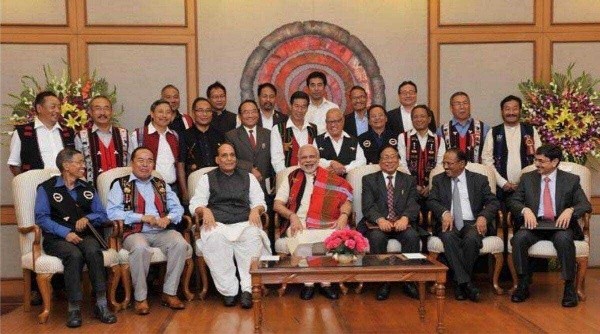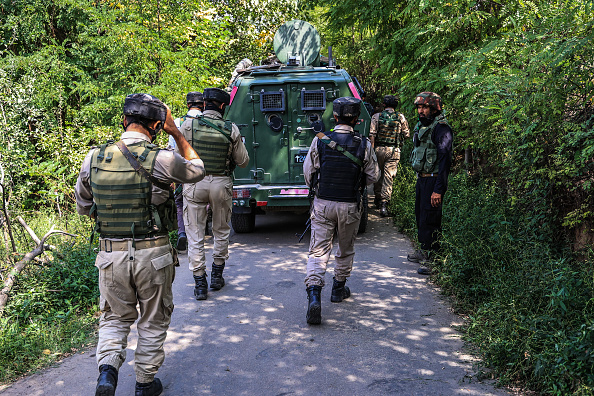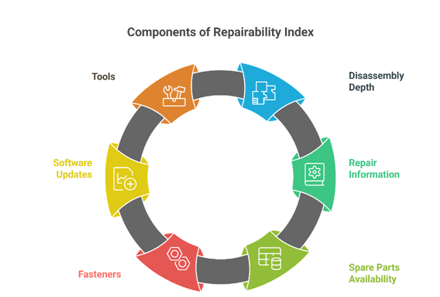Mount LewotobiLakiLaki
- 07 Aug 2025
In News:
Mount LewotobiLakiLaki, one of Indonesia’s most active volcanoes, erupted in August 2025, spewing volcanic ash up to 18 km into the atmosphere and blanketing nearby villages on the island of Flores. The eruption followed another event just hours earlier, which sent ash plumes 10 km high, accompanied by glowing lava and volcanic lightning.
Key Features of the Eruption
- Scale: Among Indonesia’s largest volcanic events since the 2010 Mount Merapi eruption, which killed over 350 people and displaced hundreds of thousands.
- Hazards Observed:
- Pyroclastic flows of gas, rocks, and lava up to 5 km down the slopes.
- Volcanic debris, including hot gravel, scattered as far as 8 km from the crater.
- Risk of lahars (volcanic mudflows) triggered by heavy rainfall.
- Alert Status: Indonesia’s Geology Agency placed the volcano on the highest alert level since June 18, 2025. The exclusion zone was extended to 7 km radius. Thousands of residents have been permanently relocated due to repeated eruptions, including a deadly series in November 2024 that killed nine and destroyed homes.
Geological Context
- Volcano Type: Part of the Lewotobi twin stratovolcano system (“husband and wife”), comprising:
- LewotobiLakiLaki (male)
- Lewotobi Perempuan(female)
- Location: Island of Flores, Indonesia.
- Height: 1,584 metres (5,197 feet).
- Ring of Fire Connection:
- Situated along the Pacific Ring of Fire (Circum-Pacific Belt), a 40,000 km horseshoe-shaped zone around the Pacific Ocean.
- Hosts 75% of Earth’s volcanoes (over 450) and accounts for 90% of global earthquakes.
India–Nepal Mutual Legal Assistance Pact and Extradition Treaty
- 07 Aug 2025
In News:
India and Nepal have recently finalised a Mutual Legal Assistance (MLA) Agreement in Criminal Matters, marking a significant step in strengthening bilateral security cooperation. The pact is designed to enhance cross-border collaboration in criminal investigations, evidence sharing, and law enforcement.
Mutual Legal Assistance (MLA) in Criminal Matters
- Definition: A bilateral or multilateral treaty that provides a structured framework for cooperation between countries to combat transnational crimes such as terrorism, human trafficking, smuggling, cybercrime, and financial fraud.
- Legal Nature:
- MLAT countries: Legally binding and based on reciprocity.
- Non-MLAT countries: Cooperation remains discretionary.
- India’s Practice:
- Central Authority: Ministry of Home Affairs (MHA), assisted by the Ministry of External Affairs (MEA) when routed through diplomatic channels.
- Existing Network: India has signed MLA treaties with 42 countries (as of November 2019), including the USA (2005), UK (1995), and France (2005).
- Significance for Nepal: Until now, Nepal (along with Bhutan) was the only neighbouring country without such a pact with India, which inadvertently made it a safe haven for criminals.
Extradition Treaty with Nepal
- Current Treaty: India and Nepal are working to revise their outdated 1953 Extradition Treaty.
- Objective of Revision: To overcome legal and administrative hurdles that delay or prevent the extradition of fugitives involved in organised crime and terrorism.
Strategic Importance
- Enhances border management and security cooperation between the two countries.
- Prevents misuse of the open India–Nepal border by criminals and extremists.
- Strengthens India’s regional security framework and supports its fight against transnational crime.
Framework Agreement

- 07 Aug 2025
In News:
The Framework Agreement (FA), signed on 3rd August 2015 between the Government of India and the National Socialist Council of Nagalim–Isak-Muivah (NSCN-IM), remains a central element in the ongoing Naga peace process. Its 10th anniversary (2025) witnessed renewed debates over its sanctity and future.
Background
- The Indo-Naga conflict has persisted for over six decades, rooted in demands for sovereignty and recognition of the Nagas’ unique identity.
- The Government of India first acknowledged the “unique history of the Nagas” in 2002 (Amsterdam talks), paving the way for structured peace negotiations.
The Framework Agreement: Key Provisions
- Recognition of Political Identity: India recognized the Nagas’ distinct historical and cultural identity.
- Shared Sovereignty: Proposed a cooperative model of governance, dividing powers between India and Nagalim while ensuring coexistence.
- Political Equality: Both India’s and Nagalim’s political systems to be respected, avoiding a hierarchical relationship.
- People-Centric Governance: Emphasizes sovereignty residing with the people, aiming for inclusive, democratic self-rule.
- Commitment to Peace: Seeks to end armed struggle and establish a roadmap for lasting peace and autonomy.
Political Significance
- The accord symbolically acknowledges the existence of the “Naga nation.”
- It shifted the discourse from an administrative problem to a political conflict requiring negotiated settlement.
- It was signed in New Delhi in the presence of Prime Minister Narendra Modi and interlocutor RN Ravi.
Current Developments
- On the 10th anniversary (2025), NSCN-IM chairman Q Tuccu reaffirmed commitment to the FA, calling it the “torchbearer of Naga sovereignty”.
- He criticized the Naga National Political Groups (NNPGs)—a coalition of other Naga factions—accusing them of aligning too closely with New Delhi by accepting a settlement under the Indian Constitution (“Agreed Position”).
- Tuccu argued that the NNPGs’ stance compromises the Nagas’ historical and political identity, unlike the FA which ensures recognition of sovereign rights.
- NSCN-IM maintains that the Government of India is slow in implementing the FA, but it remains committed despite challenges.
Operation Akhal

- 07 Aug 2025
In News:
Operation Akhal is a high-intensity counter-terrorism operation being conducted in the AkhalKhulsan forest area of Kulgam district, Jammu & Kashmir. Launched jointly by the Indian Army’s Chinar Corps, the J&K Police, and the Special Operations Group (SOG), the operation reflects India’s continued strategy to dismantle terror networks in the Union Territory.
Objectives
- Neutralize 3–5 terrorists based on intelligence inputs.
- Curb the activities of local terror modules.
- Strengthen internal security in South Kashmir.
- Disrupt associated networks of hawala funding, drug smuggling, and Overground Workers (OGWs).
Key Features
- Nature of Operation: Involves intermittent but calibrated firefights in dense forest terrain, supported by drone surveillance and reinforcements.
- Extended Duration: The operation has continued for several days, indicating the presence of multiple terrorists offering strong resistance.
- Casualties:
- At least three unidentified terrorists have been neutralized.
- Two soldiers — Lance Naik Pritpal Singh and Sepoy Harminder Singh — succumbed to injuries sustained in the encounter, highlighting the intensity of the conflict.
- Security Measures: Strict cordon around suspected hideouts, enhanced surveillance, and troop deployment to block escape routes.
Broader Context
- Operation Akhal is part of a post-Pahalgam crackdown on terror groups and their ecosystem in South Kashmir.
- Reflects India’s evolving counter-terror strategy combining ground operations, intelligence-based targeting, and crackdown on financial/logistical support systems.
Right to Repair and Repairability Index in India

- 07 Aug 2025
In News:
India has accepted the proposal to introduce a Repairability Index for electronics, aligning with the global movement to strengthen the Right to Repair. This is seen as a step towards sustainable consumption and consumer empowerment, but concerns remain about the neglect of India’s vibrant informal repair economy, which is rich in tacit and generational knowledge.
Understanding Right to Repair
- Definition: The Right to Repair ensures that consumers can repair, modify, or access affordable third-party repair services for their products.
- Global Trends:
- The European Union mandates access to spare parts and repair manuals.
- Several U.S. states have legislated consumer rights for repair.
- The principle supports UN SDG-12 (Responsible Consumption and Production).
- India’s Framework:In 2023, the Department of Consumer Affairs launched a Right to Repair portal, covering electronics, automobiles, and farm equipment.
Significance Beyond Consumer Rights
- Tacit Knowledge Systems: Informal repairers acquire skills through observation and mentorship, not formal certifications. Repair hubs like Karol Bagh (Delhi) and Ritchie Street (Chennai) embody this tradition.
- Cultural Identity: Repair is not just technical work but part of India’s jugaad culture, reflecting frugality, resource reuse, and indigenous innovation.
- Sustainability: Repair extends product life, prevents premature disposal, and reduces e-waste burden.
- Unrecognized Workforce: Informal repairers, despite their contribution to the circular economy, remain excluded from labour laws and digital policy frameworks.
Policy and Digital Gaps
- E-Waste Rules, 2022: Focus primarily on recycling while overlooking repair as the first line of defence.
- Skill India (PMKVY): Training modules remain rigid and unsuitable for improvisational, diagnostic repair work.
- AI and Digital Public Infrastructure (DPI) Policies: Emphasize structured data but ignore human-led, tacit repair knowledge.
- Education (NEP 2020): While advocating experiential learning, it fails to recognize repair work as skill education.
- Legal Support: Informal repairers lack certification pathways, formal rights, or recognition within the digital economy roadmap.
Towards an Inclusive Repair Ecosystem
- Repairability Standards: Embed repair norms in AI systems, public procurement, and hardware design.
- Expanded Right to Repair:
- Introduce product classifications by repairability.
- Ensure access to manuals and spare parts.
- Promote community repair hubs.
- Skill Recognition: Integrate informal repairers into e-Shram, and design flexible reskilling modules.
- Knowledge Preservation: Use AI tools (LLMs, decision trees) to digitize tacit repair knowledge and make it shareable.
- Policy Convergence: Collaborate across ministries — Labour (MoLE), Electronics & IT (MeitY), Rural Development (MoRD) — for a unified repair ecosystem.
